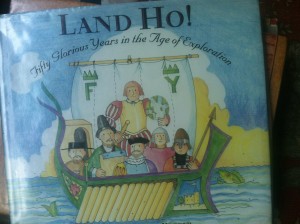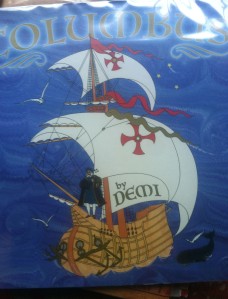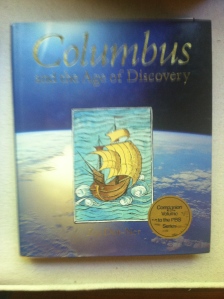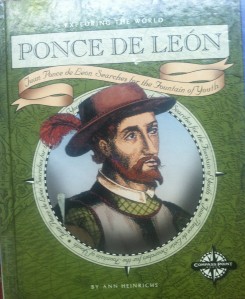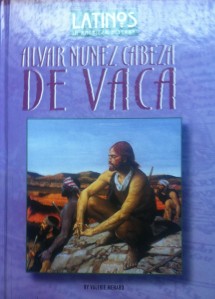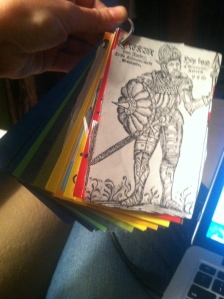 A word about this globe. I found it at a rummage sale at an old church, and it is fantastic. It glows. Here you can see AJ assessing the likelihood those European explorers were going to get to India by heading west from Europe…
A word about this globe. I found it at a rummage sale at an old church, and it is fantastic. It glows. Here you can see AJ assessing the likelihood those European explorers were going to get to India by heading west from Europe…
After exploring the tribes of indigenous peoples in North America, it was time to hear about those intrusive European explorers. Previous exposure to this had mostly been on Columbus, but this time around we did a deep dive, starting all the way back with Erik the Red. First AJ mapped out the various explorers and their eventual discoveries (I thought the coloring of Asia was a bit overzealous, but he really didn’t agree that the map needed to be colored at all. World’s biggest opposer to coloring=AJ).
After the nonsense of coloring was complete, he moved on to what was clearly a more important use of his time–questioning the intent of Columbus. That was actually the title of the chapter. This exposure, along with a few supplemental books on the topic, set the stage for our understanding that most of the explorers were largely clueless, ill prepared, and rather cruel and destructive. Columbus was really kind of a jerk, who didn’t actually discover America, and ignorantly called the indigenous people Indians. And as the globe makes painfully obvious, he was pretty far from India.
With the right mindset in place, we ventured on to learn about the explorers of the Southeast. Included in this were the explorers of Ponce de Leon (fountain of youth, anyone?), Navarez, de Vaca, and de Soto. We had books from the library on these explorers as well:
Then we moved to the north, learning about Henry Hudson and the attempt to find the Northwest Passage. Kudos to Intellego for all the great activities and discussion questions. One of my favorite discussion questions led us to talk about how hard it might have been to find sailors to agree to man these exploration voyages–with rotten food, disease, rough seas, and hostile natives waiting to greet them.
All in all, we learned about Erik the Red (including a heated discussion about whether Leif Erikson and Erik the Red were the same person. Father & son, just in case you were interested…), Columbus, Cabot, de Leon, Balboa, Verrazano, Cartier, de Soto, Coronado, and Hudson. How can we remember all of these, you ask? Well…
One of our most favorite ways to learn around here is creating Things on Rings. AJ is a very hands on learning, and while he loves books of all kinds, since he was very young he has loved all kinds of flashcards. Not the drill and kill flashcards, but interesting flashcards full of fun facts. For years, when we have been working through units that had lots of pieces to remember and understand, we have used Things on Rings. The trick: metal fastener rings of all sizes, a hole punch, and then any sort of thing you may want to bring together. We have used this with Greek/Roman/Egyptian Gods and Goddesses, Homonyms/Synonyms, U.S. Presidents, Leaves, and last year–Kings and Queens of England. So of course, we now have Explorers on Rings:
I love these because even after everything else has been filed and put away, the Things on Rings hang on nails in AJ’s room, or in our Schoolroom, and he pulls them out and looks at them over and over again.

